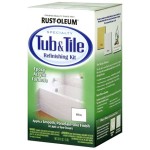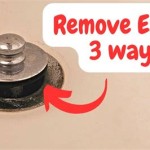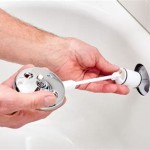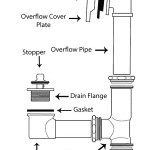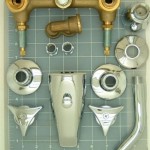How To Deep Clean An Acrylic Bathtub
An acrylic bathtub offers a smooth, durable, and aesthetically pleasing bathing experience. Its non-porous surface resists the growth of mold and mildew better than some other materials. However, acrylic is susceptible to scratches and can become dull over time if not properly maintained. Regular cleaning is essential, but periodically, a deeper clean is required to remove stubborn stains, soap scum buildup, and restore the tub's original shine. This article provides a comprehensive guide to effectively deep cleaning an acrylic bathtub without causing damage.
The frequency of deep cleaning depends on usage and environmental factors. Bathtubs used daily or located in humid environments may require more frequent deep cleaning, perhaps once a month. Bathtubs used less frequently can be deep cleaned every two to three months. Regardless of schedule, attending to spills and stains promptly helps minimize the need for intensive cleaning later.
Before embarking on any cleaning process, it is crucial to gather the necessary tools and cleaning solutions. Using the right supplies ensures effective cleaning and prevents potential damage to the acrylic surface. Harsh chemicals and abrasive scrubbers should be strictly avoided.
Gathering the Right Cleaning Supplies
Selecting the appropriate cleaning supplies is essential for protecting the delicate surface of acrylic bathtubs. Choosing mild, non-abrasive solutions and tools can effectively remove dirt, grime, and stains without causing scratches or dulling the finish. These include:
1. Non-Abrasive Cleaner: Opt for cleaners specifically designed for acrylic surfaces. These cleaners are formulated to remove soap scum and grime without scratching the material. Alternatively, a mixture of gentle dish soap and warm water can be used as a safe and effective cleaning solution.
2. Soft Cloths or Sponges: Microfiber cloths are ideal for cleaning acrylic bathtubs. Their soft texture prevents scratching, and their absorbent properties help lift dirt and grime effectively. Soft sponges are also suitable, but avoid using scouring pads or abrasive sponges.
3. Spray Bottle: A spray bottle is useful for applying the cleaning solution evenly over the surface of the bathtub. This allows for better distribution and coverage, ensuring that all areas are adequately treated.
4. Baking Soda: Baking soda is a mild abrasive that can be used to tackle stubborn stains. When mixed with water, it forms a paste that can be gently applied to problem areas without damaging the acrylic surface.
5. White Vinegar: White vinegar is an excellent natural cleaner and disinfectant. Its acidity helps dissolve soap scum and mineral deposits effectively. It should be diluted with water to prevent any potential damage to the acrylic.
6. Soft-Bristled Brush (Optional): A soft-bristled brush can be used to clean hard-to-reach areas, such as around the drain or faucet. Ensure that the bristles are soft enough to avoid scratching the acrylic surface.
7. Warm Water: Warm water is essential for rinsing away the cleaning solution and loosening dirt and grime. It also helps to activate the cleaning properties of certain cleaning agents.
8. Rubber Gloves: Protecting hands with rubber gloves is crucial when handling cleaning solutions. Gloves prevent skin irritation and protect against prolonged exposure to chemicals, maintaining skin health throughout the cleaning process.
9. Eye Protection: While the cleaning solutions used are generally mild, wearing eye protection is recommended to prevent accidental splashes from causing irritation or injury. Safety glasses or goggles offer a protective barrier and ensure a safe cleaning experience.
10. Clean, Dry Towel: After rinsing, a clean, dry towel is used to wipe down the bathtub, preventing water spots and leaving a sparkling finish. A microfiber towel works best to avoid streaks and ensure a smooth, dry surface.
Step-by-Step Deep Cleaning Process
Once all the necessary tools and supplies have been gathered, proceed with the deep cleaning process, following these steps to ensure a thorough clean without damaging the acrylic surface:
1. Initial Rinse: Begin by rinsing the entire bathtub with warm water. This helps to loosen any loose dirt, hair, or debris, making it easier for the cleaning solution to penetrate the buildup. Ensure all surfaces are wet before applying the cleaning solution.
2. Apply Cleaning Solution: Spray the chosen non-abrasive cleaner or the dish soap and water mixture evenly over the entire surface of the bathtub. Focus on areas with visible soap scum, stains, or mildew. Allow the cleaning solution to sit for about 10-15 minutes to loosen the buildup. This soaking period allows the cleaner to penetrate and break down the grime, making it easier to remove.
3. Scrub Gently: Using a soft cloth or sponge, gently scrub the entire surface of the bathtub. Avoid using excessive pressure or abrasive motions, as this can scratch the acrylic. Pay extra attention to areas with stubborn stains or soap scum. Circular motions are effective for lifting dirt and grime without damaging the surface. If using a soft-bristled brush, focus on hard-to-reach areas, such as around the drain or faucet fixtures.
4. Tackle Stubborn Stains with Baking Soda Paste: For stubborn stains, create a paste of baking soda and water. Apply the paste to the stained areas and let it sit for about 15-20 minutes. Gently scrub the area with a soft cloth or sponge. Baking soda's mild abrasive properties help to lift the stain without causing scratches. Rinse thoroughly with warm water after scrubbing.
5. Address Soap Scum with White Vinegar Solution: To combat soap scum, mix equal parts white vinegar and warm water in a spray bottle. Spray the solution onto the affected areas and let it sit for about 10-15 minutes. The acidity of the vinegar helps to dissolve the soap scum. After soaking, scrub the area gently with a soft cloth or sponge and rinse thoroughly with warm water. Ensure the area is well-ventilated when using vinegar due to its strong odor.
6. Rinse Thoroughly: After scrubbing, rinse the entire bathtub thoroughly with warm water. Ensure that all traces of the cleaning solution, baking soda, or vinegar are removed. Any remaining residue can attract dirt and grime and may damage the acrylic surface over time. Use a handheld showerhead or a bucket to rinse all areas, including corners and crevices.
7. Dry the Bathtub: Use a clean, dry towel to wipe down the entire bathtub, removing any remaining water. Drying the bathtub prevents water spots and helps to maintain its shine. A microfiber towel is ideal for this purpose, as it is absorbent and lint-free. Pay attention to drying around the faucet and drain to prevent water from pooling and causing mineral deposits.
8. Inspect and Repeat if Necessary: After drying, inspect the bathtub for any remaining stains or buildup. If necessary, repeat the cleaning process in those specific areas. Addressing problem areas immediately helps prevent the buildup from becoming more difficult to remove in the future.
Maintaining the Shine and Preventing Future Buildup
After deep cleaning the acrylic bathtub, implementing preventative measures can help maintain its shine and minimize the need for frequent deep cleaning. Consistent care and attention can significantly extend the lifespan and aesthetic appeal of the bathtub.
1. Regular Rinsing: After each use, rinse the bathtub with warm water to remove any soap residue, bath oils, or hair. This simple step prevents soap scum from building up on the surface, reducing the need for intensive cleaning later. Encourage all users of the bathtub to adopt this habit.
2. Squeegee After Use: Using a squeegee to remove excess water from the surface of the bathtub after each use can help prevent water spots and mineral deposits. Squeegeeing is quick and effective, especially on the vertical surfaces of the tub, and contributes significantly to maintaining a clean and shiny appearance.
3. Proper Ventilation: Ensure adequate ventilation in the bathroom to reduce humidity levels. High humidity can promote the growth of mold and mildew, which can stain the acrylic surface and make it difficult to clean. Use an exhaust fan during and after showers or baths to remove excess moisture from the air.
4. Avoid Abrasive Cleaners and Tools: Never use abrasive cleaners, scouring pads, or steel wool on an acrylic bathtub. These materials can scratch and dull the surface, making it more susceptible to stains and damage. Always opt for non-abrasive cleaners and soft cloths or sponges.
5. Use Bath Mats and Trays: Place bath mats or trays in the bathtub to protect the surface from scratches caused by bath toys, shampoo bottles, or other items. Mats and trays provide a buffer between the objects and the acrylic, minimizing the risk of damage.
6. Address Spills Promptly: Clean up spills immediately to prevent staining. Certain substances, such as hair dye or harsh chemicals, can stain or damage the acrylic surface if left unattended. Wiping up spills quickly minimizes the risk of permanent damage.
7. Regular Light Cleaning: Perform a light cleaning of the bathtub at least once a week to remove any accumulated dirt and grime. This can be done using a mild dish soap and water solution or a cleaner specifically designed for acrylic surfaces. Regular light cleaning prevents buildup and keeps the bathtub looking its best.
8. Consider a Protective Coating: Apply a protective coating specifically designed for acrylic surfaces. These coatings can provide an extra layer of protection against scratches, stains, and UV damage. Consult with a professional to determine the best coating for the specific type of acrylic used in the bathtub, as there are dedicated coatings for certain types of acrylic materials.
By following these steps and implementing these preventative measures, an acrylic bathtub can be maintained in pristine condition, providing a clean and enjoyable bathing experience for years to come. Regular maintenance not only preserves the bathtub's aesthetic appeal but also extends its lifespan, making it a worthwhile investment of time and effort.

How To Clean Your Bathtub The Home Depot

How To Clean An Acrylic Tub Or Shower 9 Best Cleaners

How To Clean An Acrylic Bathtub In 5 Simple Steps Bath

How To Clean An Acrylic Bathtub The Right Way

How To Clean An Acrylic Tub Or Shower 9 Best Cleaners

How To Clean A Acrylic Tub Vintage Bath

How To Clean Acrylic Tubs And Shower Walls

Acrylic Bathtub Ways To Keep It Clean Doityourself Com

How To Clean An Acrylic Tub Or Shower 9 Best Cleaners

How To Deep Clean A Bath Cleaning Tips The Home Depot
Related Posts

